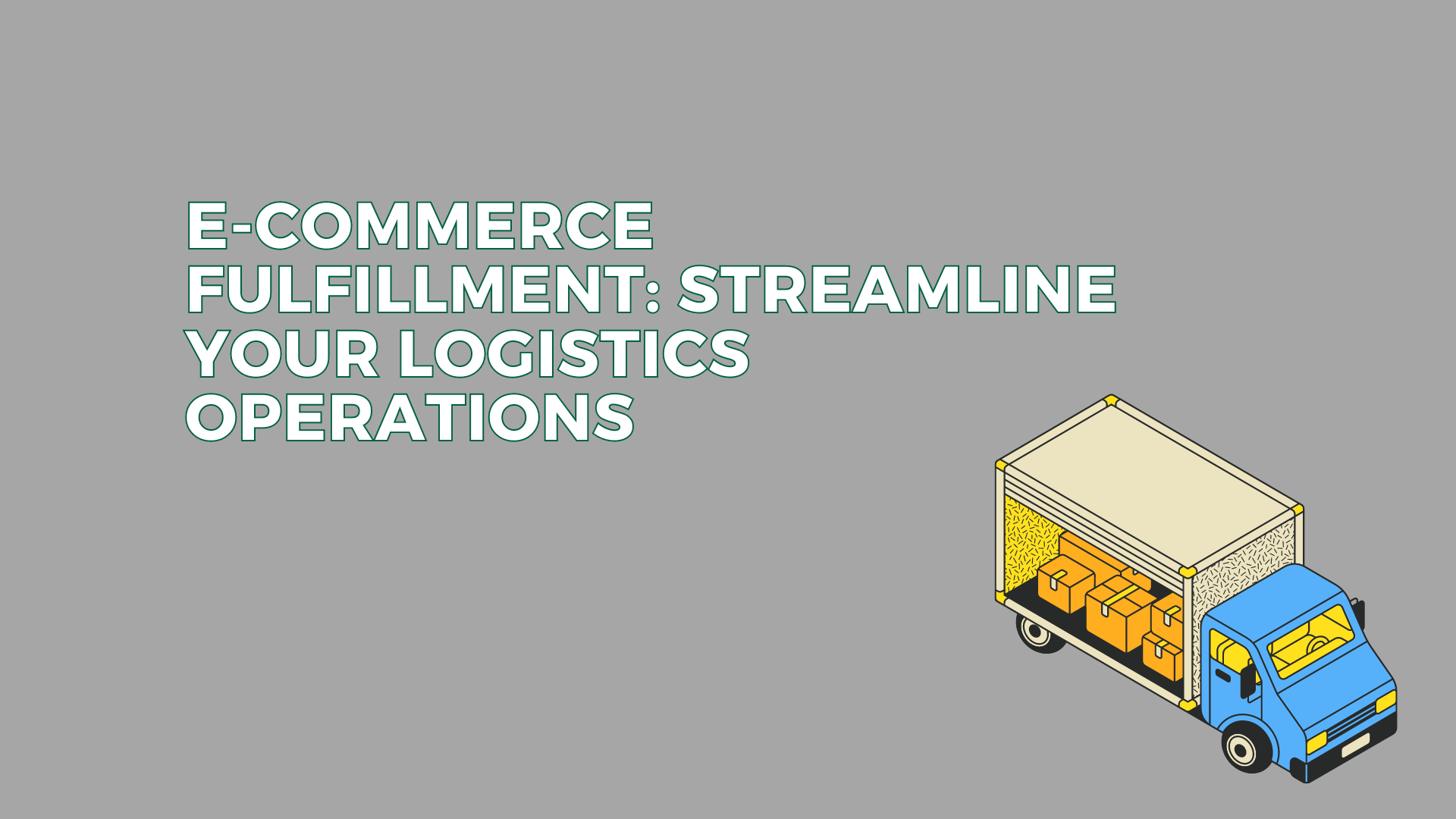Whether you’re a small startup or a large enterprise, streamlining your fulfillment process is essential for delivering exceptional customer experiences while maintaining profitability. In this blog, we’ll explore the key strategies to streamline your e-commerce logistics operations and maximize efficiency.
Understanding E-commerce Fulfillment
E-commerce fulfillment refers to the entire process of receiving, processing, and delivering orders to customers who purchase goods online. It involves various stages, including inventory management, order processing, picking, packing, shipping, and returns management. Each of these stages plays a crucial role in ensuring timely delivery and customer satisfaction.
Challenges in E-commerce Fulfillment
Before diving into strategies for streamlining logistics operations, it’s essential to understand the challenges e-commerce businesses face:
- Inventory Management: Keeping track of inventory across multiple channels can be complex and prone to errors.
- Order Processing: Manual order processing can be time-consuming and increase the likelihood of errors.
- Picking and Packing: Inefficient picking and packing processes can lead to delays and errors in order fulfillment.
- Shipping Costs: High shipping costs can eat into profit margins if not optimized effectively.
- Returns Management: Managing returns efficiently is crucial for maintaining customer satisfaction and minimizing losses.
Strategies for Streamlining Logistics Operations
- Invest in Technology: Implement an integrated e-commerce platform that centralizes inventory management, order processing, and shipping. Utilize automation tools for tasks such as order processing, inventory tracking, and shipping label generation to reduce manual errors and save time.
- Optimize Inventory Management: Utilize inventory management software to track stock levels in real-time across all sales channels. Implement just-in-time inventory practices to minimize excess inventory and storage costs while ensuring product availability.
- Improve Order Processing: Streamline the order processing workflow by automating repetitive tasks such as order verification and payment processing. Use barcoding and scanning technologies to expedite order fulfillment and reduce errors.
- Optimize Pick and Pack Processes: Organize your warehouse layout for efficient picking and packing. Group similar products together and utilize pick lists to optimize picking routes. Implement packing stations equipped with all necessary materials to streamline packing operations.
- Negotiate Shipping Rates: Partner with shipping carriers to negotiate discounted shipping rates based on your shipping volume. Utilize shipping rate calculators to choose the most cost-effective shipping options for each order, considering factors such as weight, dimensions, and delivery speed.
- Implement Returns Management Procedures: Develop clear and user-friendly returns policies to facilitate hassle-free returns for customers. Streamline the returns process by providing pre-paid return labels and automating returns processing to minimize turnaround time.
- Continuous Improvement: Regularly analyze key performance metrics such as order fulfillment speed, shipping accuracy, and return rates. Identify areas for improvement and implement continuous process improvements to enhance efficiency and customer satisfaction.
Conclusion
In the highly competitive e-commerce landscape, efficient logistics operations are crucial for success. By implementing the strategies outlined above, e-commerce businesses can streamline their fulfillment processes, reduce costs, and deliver exceptional customer experiences. Investing in technology, optimizing inventory management, improving order processing, and continuously improving operations are key steps towards achieving logistics excellence in e-commerce fulfillment.









